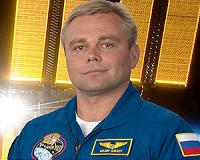 |
Moscow (AFP) Sept 24, 2010 An undocking error Friday prevented the Soyuz capsule from leaving the International Space Station, forcing three crew members to remain an extra day in orbit, Russian space officials said. "The commission has taken the decision to push back the date of the spacecraft's return. The landing will not take place today," an official at the Soyuz mission control center near Moscow was quoted by Interfax as saying. "The return of the Soyuz is planned for Saturday, at an estimated landing time of 0900 Moscow time (0500 GMT)." It is the first time in a decade of Soyuz flights to the space station that the craft has failed to undock, the ITAR-TASS news agency reported. US astronaut Tracy Caldwell Dyson and Russian cosmonauts Alexander Skvortsov and Mikhail Kornienko had been due to land in the central Kazakh steppes on Friday morning. But the manoeuvre was first delayed by a few hours due to "small glitches", before being cancelled Friday, Russian space officials said earlier. Russia's space agency chief Anatoly Perminov said crew members had feared a problem with the air seal onboard the capsule due to a computer bug. "The onboard computer system is picking up a false signal that there is no airlock on the station after the hatch is closed," Perminov said. "We have carried out checks on the air tightness. The airlock is confirmed on the ISS and the Soyuz, which is the most important for today." The Roskosmos head stressed that the Soyuz crew had all re-boarded the space station and were in good health. "We could have done it (the undocking) today but we need extra time to avoid further risks. There is no reason to rush. The most important thing is the guarantee the safety of the crew," he added.
earlier related report The MCB was pleased to learn that the government of Japan has approved continuing space station operations beyond 2016. Coupled with the approval of the government of the Russian Federation for continuation to 2020, this progress is indicative of the strength of the station partnership and the successful use of station. ESA and CSA are working with their respective governments to reach consensus about the continuation of the station. NASA also is continuing to work with the U.S. Congress to complete the necessary procedures to extend station operations consistent with the presidential budget request. The MCB also noted the benefits to future exploration beyond low-Earth orbit through enhanced station research, technology development and other opportunities. Each partner agency reaffirmed its commitment to gaining the maximum return from station with increasing the operational efficiency. On-going research with potential societal impacts includes: + NASA and the National Institutes of Health recently announced three new biomedical experiments using the station's unique microgravity facilities to improve human health on Earth. The experiments will use the station to study how bones and the immune system weaken in space as part of NIH's new BioMed-ISS program. + CSA will focus its life science research program on mitigating health risks associated with spaceflight. More specifically, these health experiments and activities will monitor crew health and deliver health care on space missions, develop exercise, etc. + ESA just started a fluid physics experiment in the Microgravity Science Glovebox onboard the station's Columbus module that is of high interest to material scientists. The experiment uses advanced optical diagnostics to investigate the transformation of particles to aggregates due to density fluctuations in a mixture. The ESA experiment demonstrates a new capability to reverse and fine-tune the aggregation process; such control may yield a significant potential impact on fabrication of micro-structured materials such as photonic crystals. + Roscosmos continues experimental programs aimed at human's adaptation to future long-term expeditions. Effects of the flight conditions on the cardiovascular system, the respiratory system and bones are being carefully investigated in dedicated medical experiments. Other research being conducted includes plantation of wheat and vegetables followed by genetic, microbiological and biochemical tests of plants. + Japan's externally mounted X-Ray camera monitors more than 1,000 X-ray sources in space, including black holes and neutron stars. The instrument scans the entire sky in X-ray wavelengths and downlinks data to be distributed through the Internet to research groups around the world. Since last October, it has issued more than 50 alerts for the X-ray transient phenomena. All of the partners also recognize the key role of the space station in inspiring students around the world to learn about science, technology, engineering and mathematics. More than 30 million students have participated in human spaceflight though communications downlinks and interactive experiments with station astronauts.
Share This Article With Planet Earth
Related Links Station and More at Roscosmos S.P. Korolev RSC Energia Russian Space News
 Medal snub for Russian cosmonaut sparks 'cosmic scandal'
Medal snub for Russian cosmonaut sparks 'cosmic scandal'Moscow (AFP) Sept 7, 2010 Russia's space agency voiced outrage Tuesday after the defence ministry refused one of its cosmonauts a celebrated state honour, in the first such snub in half a century of Soyuz flights. Cosmonaut Maxim Surayev, who returned to Earth in March after six months aboard the International Space Station (ISS), has twice been denied the Hero of Russia medal, in what the media has called a "scandal ... read more |
|
| The content herein, unless otherwise known to be public domain, are Copyright 1995-2010 - SpaceDaily. AFP and UPI Wire Stories are copyright Agence France-Presse and United Press International. ESA Portal Reports are copyright European Space Agency. All NASA sourced material is public domain. Additional copyrights may apply in whole or part to other bona fide parties. Advertising does not imply endorsement,agreement or approval of any opinions, statements or information provided by SpaceDaily on any Web page published or hosted by SpaceDaily. Privacy Statement |